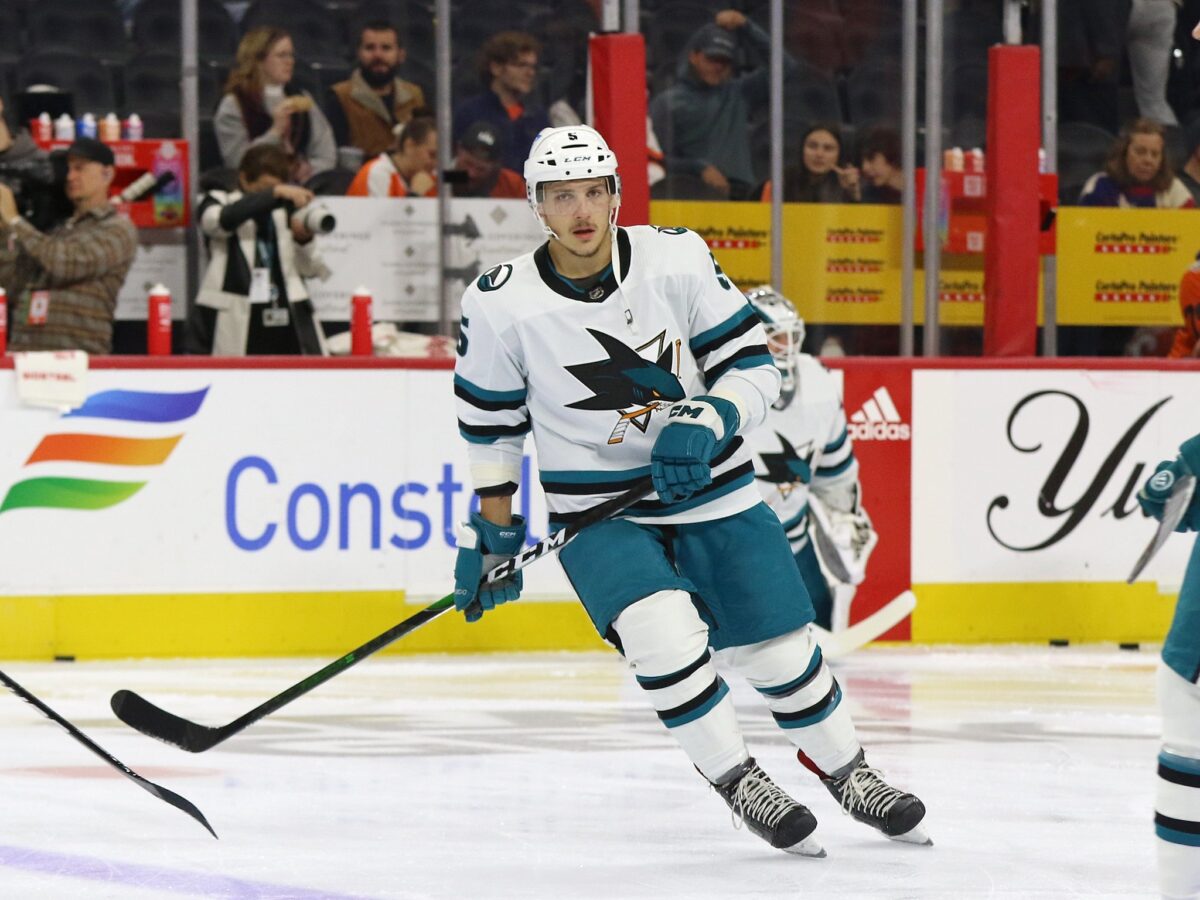On June 30, Toronto Maple Leafs general manager (GM) Brad Treliving signed Timothy Liljegren to an ill-advised two-year contract extension worth $3 million per season. On Wednesday, he undid his own mistake by parting ways with Liljegren, trading him to the San Jose Sharks to add cap flexibility and draft assets without sacrificing anything in defensive depth.
The Maple Leafs sent Liljegren – and his full cap hit – to the Sharks in exchange for a 2025 third-round pick, a 2026 sixth-round and veteran defenceman Matt Benning. Apart from giving the 25-year-old Liljegren a fresh start in San Jose after spending seven years and nearly 200 NHL games in Toronto, the move saves the organization $1.75 million in cap space and adds two picks, including a top-100 selection next summer, to their collection of draft assets.
Matt Benning
While the draft picks were a key part of the return for Liljegren, the focus for the Maple Leafs is obviously on the now, so Benning becomes an immediate person of interest. The 30-year-old brings physicality and toughness, but saw his role reduced in San Jose with the additions of Jake Walman and Cody Ceci. Like Liljegren, Benning has already been a healthy scratch on multiple occasions this season, seeing action in just seven of the Sharks’ 11 games.

If Benning can’t get into the lineup for the 2-7-2 Sharks, what are the odds that he can do so in Toronto amidst what is already a crowded blue line? It’s possible that the veteran of close to 500 NHL games will rediscover something he had lost while playing for a non-contender, or at least get his game back as he continues to recover from major hip surgery. And if he doesn’t, that won’t be particularly costly for the Maple Leafs, either.
By virtue of Benning counting for $1.25 million against the cap, his contract can easily be buried in the American Hockey League (AHL). Provided he is sent down and clears waivers, he will count for a mere $10,000 against the cap as a member of the Toronto Marlies, as the collective bargaining agreement (CBA) dictates that up to $1.15 million can be buried upon assigning a player to the AHL. The same applies to the final year of Benning’s contract in 2025-26. Taking on multiple years on a contract for a veteran depth defenceman isn’t ideal, but Benning could offer useful depth while not adversely impacting the Maple Leafs’ broader cap picture.
You Might Also Like
- Maple Leafs, Woll Shutout Golden Knights 3-0 at Home
- Maple Leafs’ Matthews Knies Exits Game After Huge Hit
- Maple Leafs’ Fraser Minten Scores 1st Career Goal
- Projected Lineups for the Maple Leafs vs Golden Knights – 11/20/24
- Toronto Marlies Showcase Depth and Skill in Strong AHL Start
A Favourable Comparison
Perhaps the biggest sign that Toronto made a fair, sensible deal in parting ways with Liljegren can be found in the Olli Maatta trade that took place less than 24 hours earlier. The Utah Hockey Club, one of the widely rumoured landing spots for Liljegren, got the dominoes falling on depth defencemen trades when they acquired Maatta from the Detroit Red Wings for a 2025 third-round pick, setting the trade price on blue line depth.
Great fit for Liljegren in San Jose. He’ll get to play a lot and can grow with a couple other younger Swedish players
— Kyle Cushman (@Kyle_Cush) October 30, 2024
Tough asset management for the Leafs to get slightly more than Detroit got for Olli Maatta https://t.co/IbPBsI78Xg
The comparisons are eerie. Liljegren is five years younger than Maatta, but both carry identical $3 million cap hits this season while struggling to maintain a place in the lineup (Maatta had also sat in the press box on two occasions early this season). Critically, Maatta is in the final season of a two-year deal, while Liljegren remains under contract for one more season.
In the end, the Maple Leafs successfully landed the same third-rounder in return for their depth defenceman. Their willingness to absorb the remaining contract of Benning probably helped them squeeze the additional sixth-rounder out of San Jose, as well. If speculation that Toronto had trade options and was simply waiting on the right offer is correct, then it’s probably no coincidence that the Liljegren trade materialized so soon after Maatta was shipped to Utah.
Liljegren still has the chance to turn things around and become more of an impact defender with the Sharks, but it seemed clear that wasn’t going to happen in Toronto. And for a team so tight to the cap, the Maple Leafs simply couldn’t afford to have a $3 million player sitting in the press box. It’s a credit to Treliving and the front office, then, that they were able to pivot off of a flawed contract extension and add some draft picks plus another back end option while getting out from under a bad contract.
